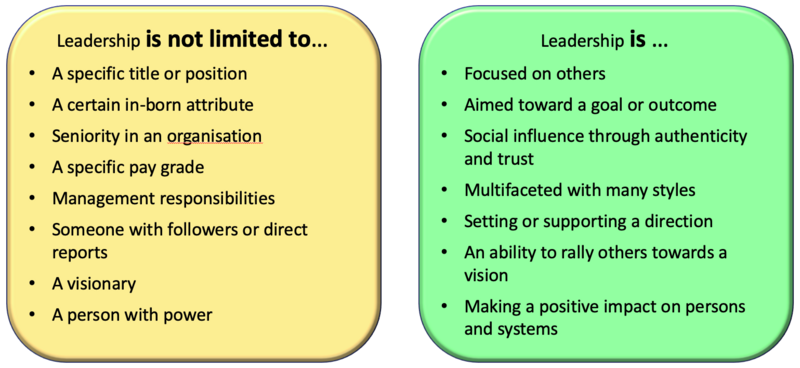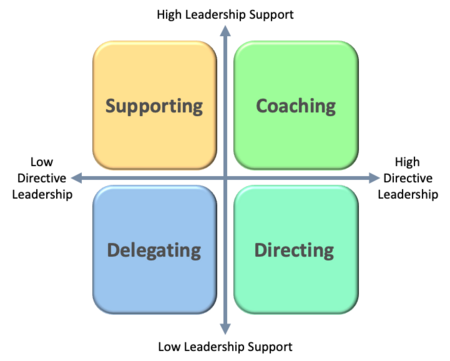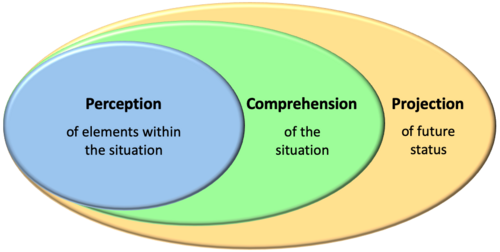Leading in Rehabilitation - Assess the Situation
Original Editor - Thomas Longbottom based on the course by
Jason Giesbrecht
Top Contributors - Thomas Longbottom, Jess Bell, Kim Jackson, Jorge Rodríguez Palomino and Ewa Jaraczewska
Introduction[edit | edit source]
A gap commonly exists between knowing about leadership to doing the leading. Bridging this gap can help persons in formal and informal leadership positions become capable and influential leaders in rehabilitation. A framework for this endeavour consists of four components: assessing the situation, selecting the leadership approach, implementing the leadership approach, and then reflecting on and learning from the experience. These four components will comprise the 4-course series on leadership in rehabilitation. The first step involves learning how to collect and understand the information in a situational assessment quickly. Then the effective leader must choose from multiple leadership styles, matching the approach to the situation. This matching approach is effectively situational leadership. Next, implementation of the selected leadership style requires the person to assess their emotional intelligence competencies and explore how to develop those skills not already in place. Finally, the effective leader should reflect on the process, learning from the experience and the potential influences of their emotional intelligence. This course will focus on the first step of assessing the situation.
What is Leadership?[edit | edit source]
A clear understanding of what is meant by the term "leadership" is an important prerequisite to discussing how to grow in a leadership role. Review these comparisons of what leadership is NOT versus what leadership IS:
Rather than being limited to an organisational position with specific responsibilities and structural power, effective leadership incorporates characteristics of an outward focus and ability to motivate others toward a shared vision with influence gained by trust and respect. These attributes may be found or developed in a person who is a formal leader - in other words someone who has been formally appointed to a position of authority - or one who is an informal leader with the ability to influence via inspiration, engagement, and encouragement.
A formal leader...
- Someone formally appointed by the organisation or elected by the members to a position of authority
- Someone who possesses formal authority in the organisational hierarchy
- Someone who may lead by authority, influence, engagement, or a combination of these; followers may respond out of respect and admiration, or out of fear and compliance.
- Examples: manager, supervisor, team captain, director, chief executive officer.
An informal leader...
- Someone without formal organisational authority or power.
- Someone who may possess unique skills, education, or knowledge.
- Someone who is emotionally effective.
- Someone who influences others by conviction, inspiration, engagement, relationship, or encouragement.
- Examples: clinician, team member, anyone.
Distinguishing between the behaviours of supervising, managing, and leading is also useful in discussing the development of effective leadership. Supervising is the act of monitoring and overseeing the performance of others to ensure their work is done correctly. This may include the quality, the quantity, or the timeliness of the work. Managing is the employment of administrative control and authority, regulating resources to ensure the goals of the organisation are met. This involves planning, strategising, directing, executing, and problem-solving. Leading is encouraging, supporting, motivating, developing, and inspiring others to achieve a common vision. This is done through relationship, trust, mutual respect, and authenticity.
Situational Leadership[edit | edit source]
A leadership style is the way they get things done, how they provide direction and implement plans. Examples include a transactional that is focused on performance, a bureaucratic style concerned with hierarchy and duty, a visionary style that emphasizes inspiration and progress, and a servant style that is more humble and protective. There are others of course, but it is the style of situational leadership, developed by Hersey and Blanchard, that suggests the best leadership style is the one that is adjusted to fit the persons being led and the task that is being undertaken. It is an adaptive, flexible style that is situation-dependent. Situational leadership contains both directive and supportive leadership behaviours, and the good situational leader must find the right balance of these.
Four dimensions of situational leadership:
- Directing: Focus on task completion with less concern for needs of the followers; requires clear instructions and supervision.
- Coaching: Focus on increasing the confidence and skills of the followers, with the goal of increasing their capability and independence.
- Supporting: Focus on listening, encouraging, providing feedback and guidance, with trust in the followers to accomplish the desired outcomes.
- Delegating: Hands-off approach, encouraging autonomy but providing support and guidance as needed.
Situational Awareness[edit | edit source]
"Situation awareness is the perception of the elements in the environment within a volume of time and space, the comprehension of their meaning, and the projection of their status in the near future." -- Dr. Mica Endsley[1]
The theory of situation awareness stems from work done in military settings where high-stress, high-stakes decisions have to be made rapidly in highly fluid environments. It involves being observant of the surroundings, understanding what is happening, and predicting what may happen in the near future. Per Endsley, situation awareness precedes decision and action, and it is informed by goals, objectives, and expectations. Factors such as stress and complexity can influence it. Information processing mechanisms impacted by factors such as experience, ability, and training affect how situations are understood.
There are three levels of situation awareness:
- Perception, where the focus is on gathering qualitative and quantitative data about the situation.
- Comprehension, where the leader analyzes and synthesizes the information to understand the situation.
- Projection, where the effort is in anticipating the outcome based on the decisions made and actions taken.
In the perception phase, leaders ask questions like:
- What is happening around me?
- What are the facts?
- Who is involved?
- Where is the situation occurring?
- When is this happening?
- What emotions are involved?
- What behaviours or actions have I observed?
- What are my expectations and goals?
- What am I missing?
In the comprehension phase, the leader is striving to understand the situation before selecting the leadership approach, integrating new information as it arises. Questions asked may include:
- How well is the team/group/person functioning?
- In the context of the goals, expectations, and desired outcomes, is the system on track?
- Is the system improving, worsening, or staying the same?
- Are there any deviations from expectations for the team/group/person?
In the projection phase, the leader is anticipating outcomes based on their decisions and actions. Questions asked may include:
- How will this situation impact the future?
- What decisions do I need to make to reach the desired outcome?
- What action is required to course correct.
- If I make this decision and act, what will happen?
- What might get in the way?
- What am I avoiding?
Social/Emotional Intelligence and Decision-Making[edit | edit source]
Resources[edit | edit source]
- bulleted list
- x
or
- numbered list
- x
References[edit | edit source]
- ↑ Endsley MR. Toward a theory of situation awareness in dynamic systems. Human Factors 1995;37(1):32–64.









